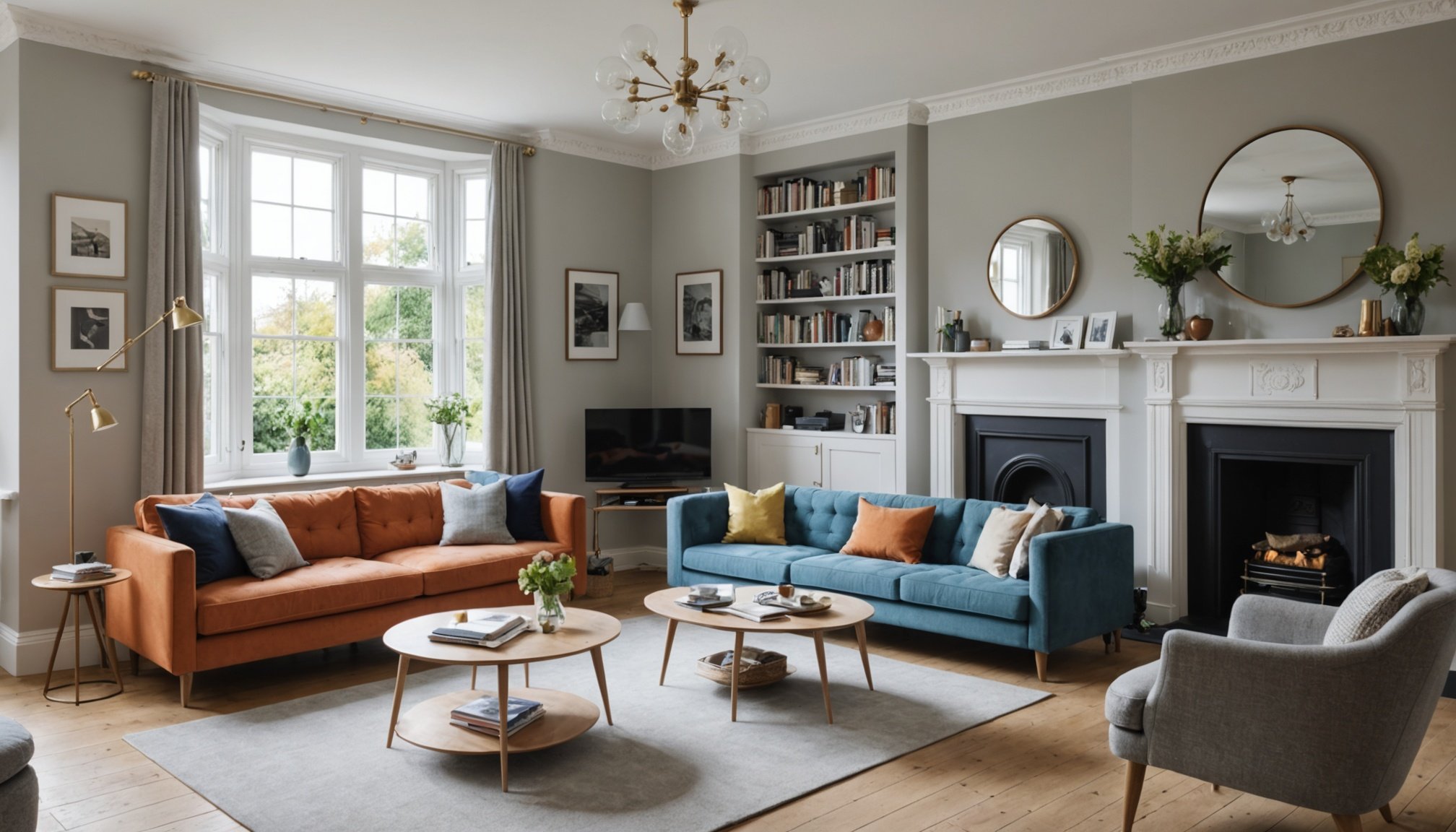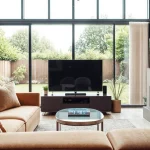Key Factors Linking Home Design and Well-Being in the UK
Understanding the home design well-being UK relationship is crucial as the environment we inhabit directly affects our mental and physical health. Research consistently shows that the impact of interior design on health extends beyond aesthetics, influencing stress levels, sleep quality, and overall mood.
Key foundational aspects include the home’s layout, natural light, air quality, and materials used. A well-considered layout promotes easy movement and reduces clutter, fostering calmness. Ample natural light in UK homes combats seasonal affective disorder common in northern latitudes. Furthermore, improving air quality through ventilation and non-toxic materials reduces respiratory problems—a growing concern given rising urban pollution.
In parallel : What Inspires the British Love for Cozy Homes?
UK housing trends increasingly emphasize these features. Studies by health authorities and government guidelines advocate for designs promoting healthy living environments, highlighting the need for attention to space utilization, natural elements, and sustainable materials. These insights inform both new builds and renovations, aiming to enhance occupants’ well-being holistically.
By prioritizing these elements, UK homeowners can significantly improve their quality of life, demonstrating that good home design well-being UK connections are both achievable and essential.
In the same genre : How Can You Maximize Storage in a Small English Home?
The Role of Natural Light and Ventilation in British Homes
Small details can make a big difference
In UK homes, natural light plays a vital role in enhancing mood, productivity, and sleep quality. Exposure to daylight helps regulate the circadian rhythm, which in turn improves sleep patterns and overall well-being. Research consistently shows that daylight impact on well-being is significant, especially during the darker months when sunlight is limited. Without sufficient natural light, occupants may feel lethargic and less motivated.
Ventilation and health are closely connected, particularly in the UK climate where dampness and poorly ventilated spaces can exacerbate respiratory issues. Proper ventilation reduces indoor pollutants, controls humidity, and prevents mould growth—all crucial for mental and physical health. It’s not just about opening windows: controlled airflow systems can maintain fresh air without energy loss.
To maximise natural light and ventilation in British homes, practical adaptations include using light-coloured surfaces inside to reflect sunlight, positioning mirrors strategically, and installing vents or trickle vents in windows. Ventilation should balance with energy efficiency to keep homes comfortable year-round. Such adjustments ensure houses feel brighter, fresher, and healthier, enhancing daily living in the typical UK environment.
Interior Layout and Space Utilisation for Well-Being
Understanding how home layout mental health impacts well-being is key to creating a comforting environment. Open-plan designs promote a sense of spaciousness, reducing feelings of confinement common in small UK homes. This layout encourages natural light flow and social interaction, which are crucial for psychological comfort.
In compact UK homes, efficient space design becomes essential. Experts recommend maximizing vertical storage and using multifunctional furniture to combat clutter—a known stress contributor. Thoughtful placement of elements can also define zones for work, relaxation, and dining without walls, maintaining openness while providing purpose.
Decluttering ties directly into mental health. Psychologists emphasise that a tidy, organised interior reduces cognitive load and anxiety. Flexible design strategies, such as foldaway desks or modular shelving, allow residents to adapt spaces quickly, supporting fluctuating needs and moods. This adaptability fosters a sense of control and calm.
Ultimately, applying these principles transforms small UK homes into nurturing sanctuaries. Prioritising space utilisation for well-being helps occupants feel less stressed and more at ease, demonstrating how interior design profoundly affects mental health.
Colour Schemes, Materials, and Sensory Experience
Understanding interior colour psychology UK reveals how hues impact mood and energy. Soft blues and greens, for example, are calming and linked to reduced stress, promoting sensory well-being. Conversely, warm shades like ochre and terracotta inject energy and warmth, ideal for social spaces. Selecting colours that resonate with your lifestyle fosters balance and emotional comfort at home.
Healthy home materials also play a vital role. Prioritising sustainable and non-toxic materials—such as organic cotton fabrics, bamboo flooring, and low-VOC paints—helps reduce indoor pollutants, supporting respiratory health and overall wellness. These choices enhance the indoor environment, aligning with a focus on sensory well-being and long-term health benefits within UK homes.
Texture, scent, and sound accents further create a soothing atmosphere. Introducing soft textures like wool throws or natural linen cushions invites tactile comfort, while essential oils or beeswax candles add subtle, natural scents that calm the mind. Incorporating gentle background sounds—like water features or soft music—can also improve sensory well-being, making the space more inviting and restorative. This multi-sensory approach ensures your home supports both mental clarity and physical health seamlessly.
Access to Green Spaces and Biophilic Design in the UK
The biophilic design UK trend emphasizes integrating nature into urban living spaces to improve mental and physical well-being. Urban green spaces remain vital in British cities, where gardens, balconies, and even window views of nature significantly enhance residents’ quality of life. Studies repeatedly show that access to these natural elements reduces stress, boosts mood, and promotes relaxation.
In densely populated areas, where private gardens may be scarce, incorporating plants and natural materials indoors offers a practical solution. Indoor greenery, from potted plants to moss walls, taps into the benefits of biophilic design UK by connecting people with nature regardless of their outdoor access. This can notably improve mental health by lowering anxiety and fostering calmness.
However, barriers such as limited space, air pollution, and socioeconomic factors often restrict access to urban green spaces. Innovative approaches such as rooftop gardens, community green areas, and maximizing balconies for plant growth are effective strategies to overcome these challenges. Encouragingly, local initiatives in the UK aim to expand and preserve urban green spaces, supporting healthier, nature-enriched environments for all residents.
Trends and Innovations in British Home Design for Better Well-Being
In the UK, wellness architecture is reshaping how homes are designed to promote mental and physical health. A strong focus on natural light, improved ventilation, and integrating green spaces indoors reflects the growing demand for environments that support well-being. These UK home design trends emphasize materials that are both sustainable and non-toxic, reducing pollutants that can affect health.
Technology plays a pivotal role in smart home well-being by providing tools that monitor air quality, regulate temperature, and adjust lighting to align with circadian rhythms. For example, smart sensors can detect humidity or allergens, enabling proactive adjustments to maintain comfort and reduce stress.
Practical modifications include the incorporation of biophilic elements such as indoor plants, living walls, and gardens that connect residents with nature. Additionally, open layouts are being favored to encourage movement and social interaction, contrasting with previously compartmentalized designs. With wellness at the core, British homeowners are embracing innovations that not only enhance aesthetic appeal but actively contribute to healthier lifestyles within their living spaces.
Challenges and Practical Tips for Enhancing Well-Being in UK Homes
Small spaces, damp conditions, and inadequate insulation are common UK housing challenges directly affecting well-being. Dampness can lead to respiratory issues and low mood, while cold, poorly insulated homes often increase stress and discomfort. Recognising these issues is the first step toward creating a healthier living environment.
To boost well-being at home, simple, practical actions can make a significant difference. Improving ventilation reduces dampness and promotes fresher air, which positively impacts mental health. For limited space, decluttering and strategically using storage helps create a calming, organised atmosphere. Adding plants can improve air quality and add a natural, soothing touch.
UK homeowners and renters can access support from local councils and non-profits offering grants or advice for insulation and damp-proofing. Organisations like the National Health Service provide guidance on managing mental health through environmental improvements at home.
By tackling UK housing challenges thoughtfully and utilising available resources, residents can transform their homes into supportive spaces that promote both physical comfort and mental well-being.









